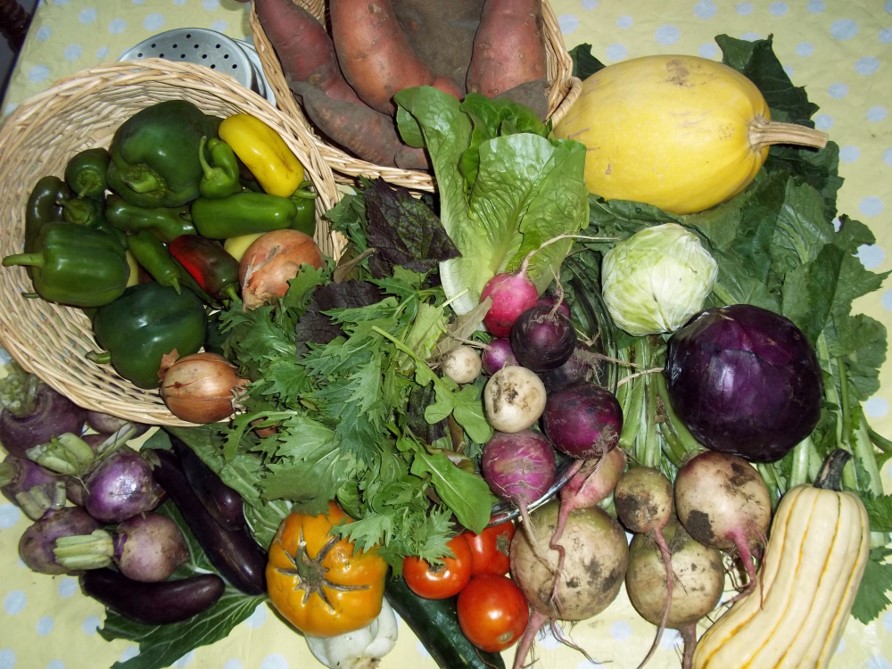 The sun is shining brightly but there is still snow on the ground in Northwest Ohio. It is the end of February and while my grocery shopping list includes lettuce and other fresh vegetables, we also eat a lot of frozen and canned vegetables right now. Considering our food shopping and gardening patterns, I can predict that we will be eating a lot more variety of fresh vegetables in six months compared to today.
The sun is shining brightly but there is still snow on the ground in Northwest Ohio. It is the end of February and while my grocery shopping list includes lettuce and other fresh vegetables, we also eat a lot of frozen and canned vegetables right now. Considering our food shopping and gardening patterns, I can predict that we will be eating a lot more variety of fresh vegetables in six months compared to today.
Question: Why am I daydreaming of fresh, local produce like cucumbers, greens, tomatoes, and peppers that I won’t get to enjoy for almost half a year?
Answer: Now is the time of year to sign-up as a CSA member! I completed the annual application, chose my pick-up site, and the check is in the mail.
Question: What is a CSA?
Answer: Community Supported Agriculture (CSA) is one way to receive local, seasonal produce. CSA members purchase a share of the farm, and in turn, farmers provide weekly produce throughout the growing season. Most often, CSA money is paid before the growing season starts. Some farms offer working shares where members commit to a certain amount of work hours on the farm, but each CSA operates differently.
Question: Why would I want to spend money right now on food that isn’t even planted yet?
Answer: One benefit is that the local farm has money to invest in the upcoming growing season. They can purchase seeds and supplies and make needed repairs. As a CSA member, I get to learn about my local farm, the food I am eating, and how growing factors such as weather and insects might influence my annual share. As mentioned before, each CSA operates a little differently. Many are based on vegetable and/or fruit shares and some offer choices of other food shares such as meat, cheese, eggs, and other specialty options like locally roasted coffee.
Question: Is there a downside to a CSA membership?
Answer: It is a calculated risk. Both the consumers and farmers commit to “shared risk”. I am paying money up front, right now, not knowing what the 2021 growing season has in store. A farmer cannot predict crop failure or pest and/or disease problems, and I cannot expect that everything will be perfect. That is OK with me because I am confident that even if it is a hard-growing year for one crop, those conditions will be ideal for growing a different crop. There’s also a risk that I won’t like or know what to do with produce that is new or unusual to me. What’s not unusual is that the farm and/or other CSA members will share tips, advice, and recipes. I just might find a new favorite this year!
It is important to find a CSA membership that works best for your household. For example, if you are too busy in the summertime to pick up and utilize your fresh produce, you might want to look for an early spring or late fall option.
Question: How do I find a CSA?
Answer: I have learned about the CSAs in my area through word-of-mouth, stores or restaurants that partner with local farms, information at sites like farmers markets, and  articles and advertisements in local community papers. Your county Extension office may have suggestions for finding local CSAs. The USDA also offers this user-friendly online directory.
articles and advertisements in local community papers. Your county Extension office may have suggestions for finding local CSAs. The USDA also offers this user-friendly online directory.

